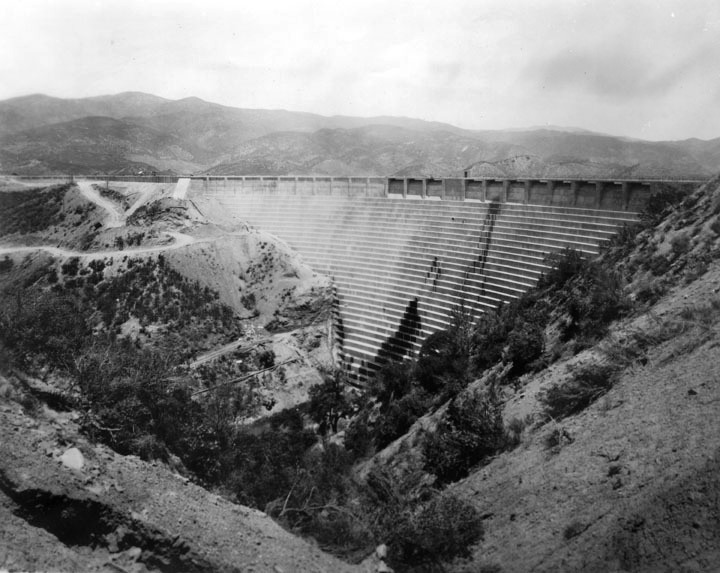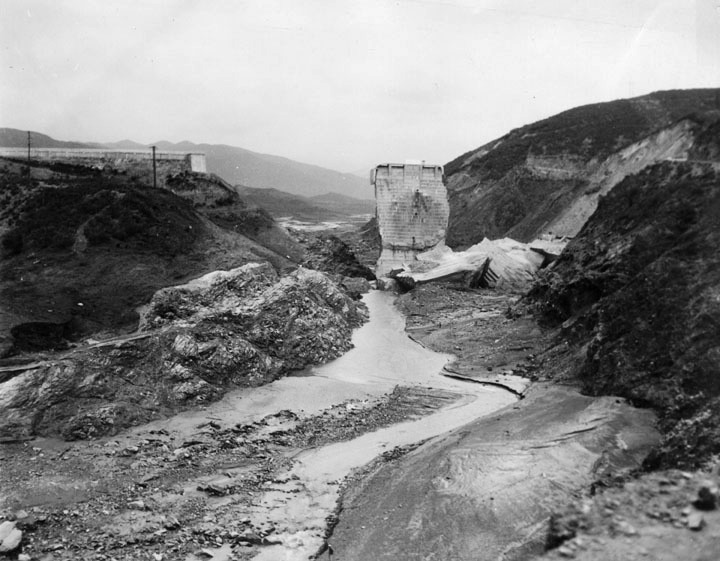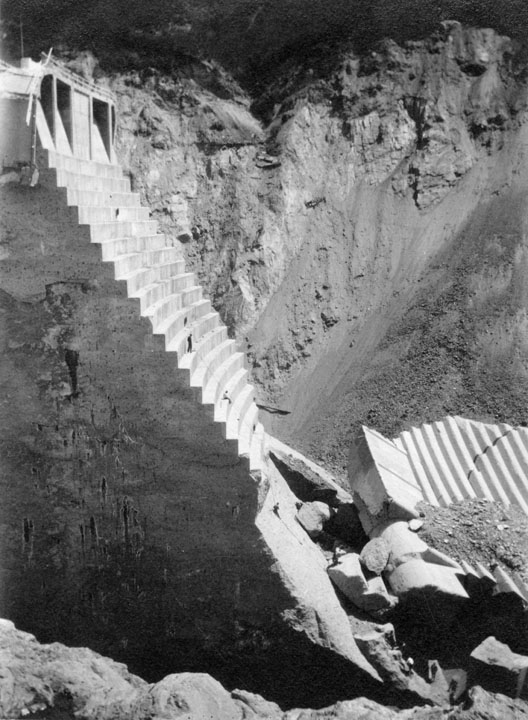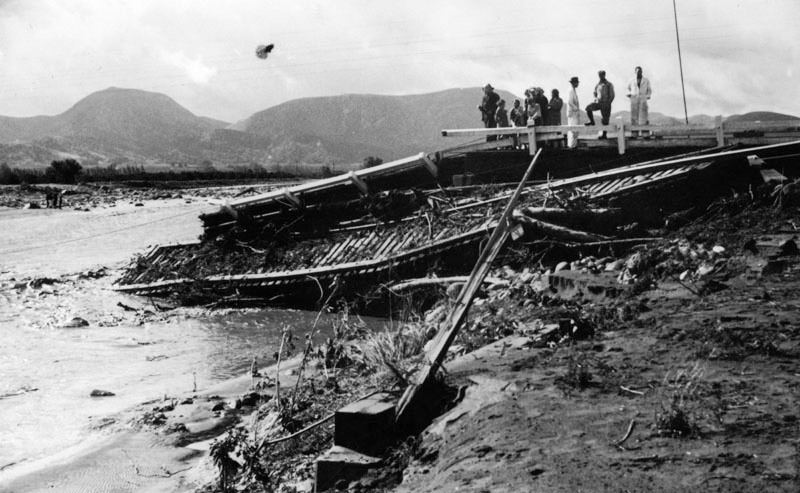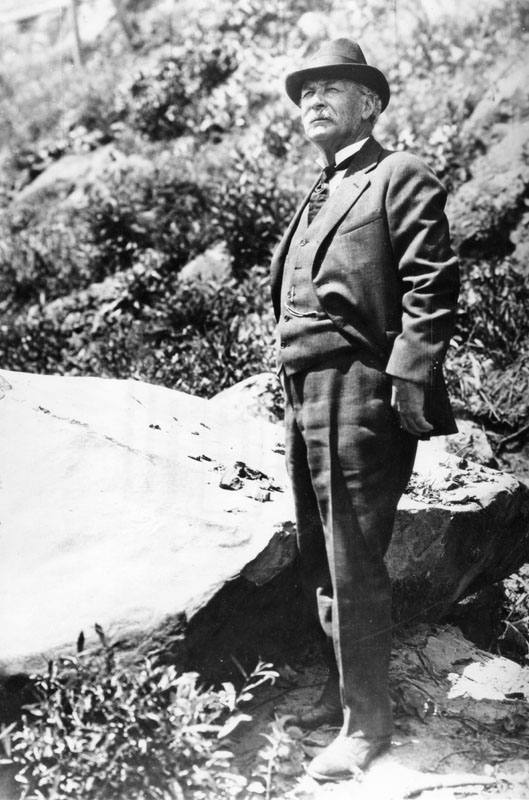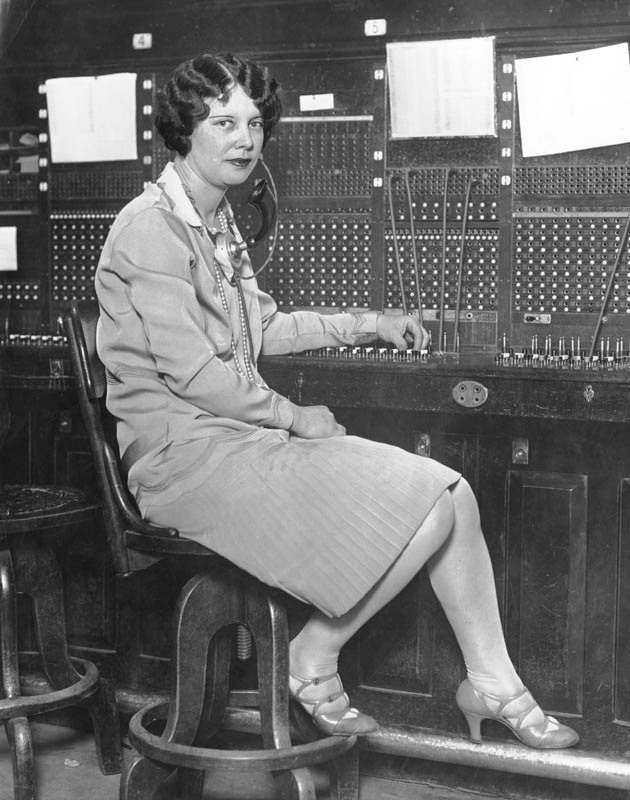11:58 p.m., March 12, 1928 –– Residents in the settlements of the San Francisquito Valley, some 45 miles north of Los Angeles, were shaken awake. The cause was not an earthquake, but the epic fail of the massive, newly-constructed dam looming over the valley.
When the St. Francis dam gave way, it went quickly and catastrophically. Dozens were killed in the first five minutes, inundated by a wall of water 140 feet high. As 12 billion gallons of water thundered out of the valley and on to the ocean near Oxnard, the torrent swept at least 400, and perhaps as many as 600, persons to their deaths. Following the disaster bodies were found everywhere from right up at the dam site (one) to the border of Mexico. A hundred or more of the missing were never found.
In addition to the human toll, the floodwaters devastated the towns of Castaic Junction, Piru, Fillmore, Santa Paula, and Saticoy in the Santa Clara Valley. Roads, bridges, and power lines were wiped out. Livestock died in the fields.
Eighty-nine years later it is worth recalling the devastation caused by miscalculating the power of water. Photos from the Los Angeles Public Library collections show the dramatic aftermath of the worst man-made disaster in California’s history.
The St. Francis Dam was built to store water from the Owens Valley Aqueduct System. Security Pacific National Bank Collection, Image #00009818
The state-of-the-art St. Francis Dam had been open two years and its reservoir had filled to capacity for the first time when tragedy struck. In the photo above, the reservoir lake is still several feet below the lip of the dam.
Shiny generators at Power Plant #2 in the vicinity of the St. Francis Dam stand ready to turn water into electric power. Ironically, the power plant was destroyed by the very waters it sought to harness. Unlike the dam, the plant was quickly rebuilt. Security Pacific National Bank Collection, Image #00009831, 1928.
This photo, taken shortly before the collapse, shows the stair-step design on the face of the dam. Some “seeps” of water were considered to be no big deal. Security Pacific National Bank Collection, Image #00009832.
Eerie Monuments
Security Pacific National Bank Collection, Image #00009834 . Photo Credit, “Underwood & Underwood.”
The only major chunk of dam to remain standing following the break was dubbed “the Tombstone” by a reporter. The accidental landmark and surrounding ruins became a mecca for tourists shortly after the cataclysm. After the death from falling of one such thrill seeker, the Tombstone and other monoliths were dynamited.
Close inspection of this photograph reveals several people on the stair steps of the Tombstone. Security Pacific National Bank Collection, Image #00009821.
Security Pacific National Bank Collection, Image #00075797.
Enormous chunks of the dam were found thousands of feet downstream, turning the valley floor into a bizarre sculpture garden. A gentleman standing in front of this “concrete iceberg” provides scale. Security Pacific National Bank, Image # 00075796.
The Frightful Flood
The horror of the catastrophe cannot be understated. Communities around the country awoke to the shocking news:
County Farm Advisor H. A. Weinland left Tuesday for the southern part of the state upon receiving the sad news that his brother, William Weinland, and the latter’s wife and ten-year-old son had been swept to death in the frightful flood through San Francisquito canyon Monday night, caused by the breaking of St. Francis dam. Weinland received a telegram from his father, Rev. William H. Weinland of Banning, telling of the death of his relatives. Weinland’s body has been found but those of his wife and son are yet lost somewhere in the depth of silt which the rushing waters from the huge reservoir above the dam left behind. The Sonoma County man’s brother was employed at one of the power stations near the dam and lived in a cottage in the valley directly below the reservoir. It is believed the flood caught the little family as they slept like it did scores of other unfortunate families. (Healdsburg Tribune, March 15, 1928)
A few fortunate souls survived the onslaught. The Associated Press paraphrased the words of an 80-year rancher plucked from the raging waters by one of his sons:
“When the water hit it, the house crumpled as though it were built of cards. I could not see a thing in the darkness and found myself clinging to what turned out to be a part of the roof of our home. Down, down with the current we went. I held on desperately. I kept saying to myself every second was my last. Then … somebody grabbed my arm in the darkness. ‘Is it you, dad?'” (Seattle Daily Times, March 13, 1928)
The report goes on to inform readers that the man’s other two sons lay in a temporary morgue nearby.
The clean up begins. Security Pacific National Bank Collection, Image #00017361, dated March 16, four days after the disaster. Photo credit “Underwood & Underwood.”
People survey the devastation along the Santa Clara River, the path the dam waters took to the sea. A railroad bridge lies in ruins. Security Pacific National Bank Collection #00070192, 1928.
Schist happens
William Mulholland (1855-1935) in an undated photo. Security Pacific National Bank Collection, Image #00043872.
The man behind the dam: William Mulholland was Chief Engineer of the Los Angeles Bureau of Water Works and Supply (now the Department of Water and Power). His towering reputation earned in the “water wars” of Southern California was largely wiped out, along with his career, after the St. Francis Dam disaster. Mulholland had personally inspected the dam only 12 hours before the disaster at the urging of the dam’s caretaker, and had pronounced it sound.
Any number of inquiries have attempted to find the cause of the disaster. While Mulholland initially clung to the theory of an earthquake, this was ruled out early on. Most experts point to geologic factors, especially the unstable hillsides that abutted the dam made up of landslide-prone schist (a type of metamorphic rock that splits easily) on one side and softened conglomerate (a type of gravel-like sedimentary rock) on the other. In short, the rock at the dam site was bad rock for a massive construction project. There were also errors in design. Mulholland had twice raised the height of the dam during construction without allowing for the increased water pressure that would result.
This photo from the Los Angeles Evening Herald is dated March 28, 1928, two weeks after the dam collapse; the caption reads “From districts swept by the St. Francis dam flood came more stories of heroic phone operators who stuck to their posts and saved scores of lives at risk of their own. Louise Gipe received and spread the first alarm at Santa Paula.” Image Herald Examiner Collection #00095916, Photo credit “Moss Photo.”
Even more than with the Long Beach Earthquake five years later, the St. Francis Dam disaster played havoc with communication. The disaster unfolded in the dark of night, taking power lines with it. The wave of water took five and a half hours to reach the sea, arriving just before dawn near Oxnard. For those in San Francisquito Canyon there was no early warning and no escape from the tsunami of water. Farther along the waters’ path, as the height of the wave lessened, some folks were able to escape to higher ground thanks to intrepid individuals such as telephone operator Louise Gipe who stood by her post and relayed a warning to residents of Santa Paula. Alerted by Gipe, California Highway Patrol officers went house to house to wake residents. At a work camp in the path of the deluge, the night watchman raised the alarm upon seeing the approaching wave. He is credited with saving half the sleeping workforce, at the cost of his own life.
The St. Francis Dam was never rebuilt. Lessons learned from the disaster informed the design, construction, and inspection protocols of dams throughout the country.




